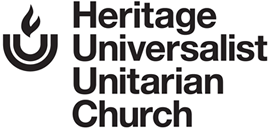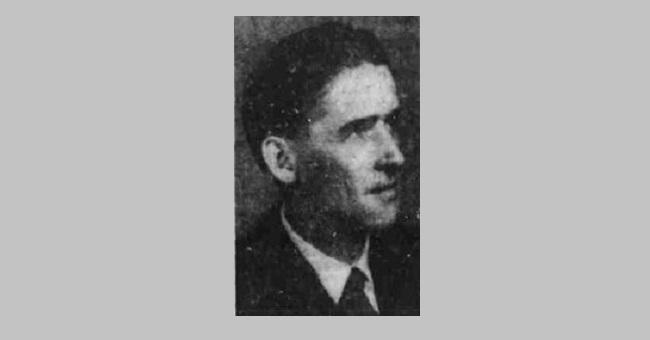The Stories of 42 Ministers Who Have Served Our Church
by Mike Roberts, Church Historian
After the depression and war years, turbulent times faced the church in the 1950s. The First Society continued to struggle during the 1950s and through the hectic days of the 1960s and 1970s. Albert Perry was brought aboard and the church attempted to solve its lingering problems.
Albert Q. Perry
Albert Perry, the son of a traveling salesman, came to Cincinnati in January 1952. At age 36, he had previously served two churches in New England and one in Quebec. His family had housed a Universalist minister when Albert was a child and this likely had a strong effect on his career choice.
When Reverend Perry started his ministry here, he saw two great challenges. The merger with City Temple was still fresh and he felt that even though the two churches worshiped together, they were still separated spiritually. The second was to start a campaign to raise funds to renovate the 50-year-old church. These tasks occupied much of the first five years he served the First Society.
In addition to these stresses, there was a strong feeling within the church that a new home had to be found. Some members were worried about changing dynamics of the neighborhood and that few new members would be found amongst the new residents of Walnut Hills. Others felt the church should not sink money into renovation but should seek a new site. Also, the Hamilton County planning commission had warned the church that in all likelihood I-71 would be built through the church property. This hung over the heads of the members for nearly five years and then the freeway was built to the west of the church and the Essex facility was unaffected.
In 1960, Reverend Perry outlined a five-point plan to improve the financial health of the church. Briefly these were 1) eliminate the confusion about the state of the church’s finances; 2) work out a temporary budget to accommodate the lack of financial drive and the loss of members who were habitual givers; 3) establish a policy regarding bequests; 4) establish a policy in regard to capital gains; 5) establish a policy regarding ministerial salaries. The church wrestled with its financial worries throughout the 1950s and Perry hoped the church would adopt policies for all of these economic issues.
Finally, the merger of the Unitarian and Universalist churches took place late in Albert Perry’s stay with our church. Adjusting to this new dynamic added to an already overstressed congregation. Perry resigned his ministry in 1961 and moved back to New England. He worked in the Civil Rights Movement and unsuccessfully ran for Congress in Rhode Island. He ministered to churches in Rhode Island, New York and Maine, finally retiring in 1990. He died in 2001 in Biddleford, Maine.
(Read a prior “From the Archives” article on Rev. Perry here.)
Raymond John Baughan
Reverend Baughan came to Cincinnati in November of 1961. He arrived after serving as editor of the Universalist Leader, the national magazine for the Universalist Church of America. Previous to that, he had served as minister to a number of New England churches. During his stay in Cincinnati, Baughan made recommendations as to how to improve the church so it could prosper. Among these were 1) give full support to the national merger of Unitarianism and Universalism; 2) update the church’s bylaws, which he felt were vague and misguided; 3) develop a better system of financial management, a constant theme throughout the history of the church; 4) conduct a self-analysis of the church; 5) initiate a study of relocation and also a possible merger with the Eastern Hills UU church.
Reverend Baughan worked for two years at accomplishing these goals before leaving in January of 1964. Upon his resignation, he cited several accomplishments. He assisted in co-hosting the state Universalist convention along with Eastern Hills church. He established a new monthly newsletter, the Lamplighter, and he created a number of new committees to address the goals listed above. During his lengthy career, he provided many and various services to the national church and his communities, among them serving 54 years as a minister, writing many poems and meditations, one of which, #485, appears in our UU hymnal, serving as a hospital chaplain, directing the Universalist Publishing House and holding many positions of leadership in state and local organizations. He also marched with Dr. Martin Luther King in 1965 from Selma to Montgomery, Alabama. Reverend Baughan died in1993.
(Read a prior “From the Archives” article on Rev. Baughan here.)
Karl Albert Bach
When Karl Bach took the pulpit of our church in November 1964, he was 56 years old. He stayed with the church for nearly six years and it was his last full-time assignment, as he retired from the profession with his resignation. He had served a number of churches in Massachusetts, Iowa and New York prior to coming to Cincinnati. He was a Unitarian by training and experience, having come to our city from the First Unitarian Church of Bridgewater, Massachusetts.
It was during Reverend Bach’s tenure that the church finally decided to leave its home in Walnut Hills and relocate to Salem Acres in Anderson Township. This was the fourth home for the church. Bach likened the move to a pendulum which had been stuck on dead center but that the relocation would be a gain for the congregation and would begin to move it in a positive direction. Along with the move, Reverend Bach urged a well-planned membership drive to be a part of the change. Bach passed away in 1999 in Portland, Oregon.
Brian R. Tansey
After Karl Bach left the Salem Acres Church, the congregation went nearly three years without a full-time minister. On September 17, 1972, Brian Tansey preached a sermon at the church and on November 11 he was installed as the new minister. He remained with Salem Acres for less than one year, resigning on July 29, 1973. Little is known of his background or where he went after leaving Salem Acres.
Image: Rev. Albert Q. Perry
Image source: The Cincinnati Enquirer, January 1, 1952, page 35.

